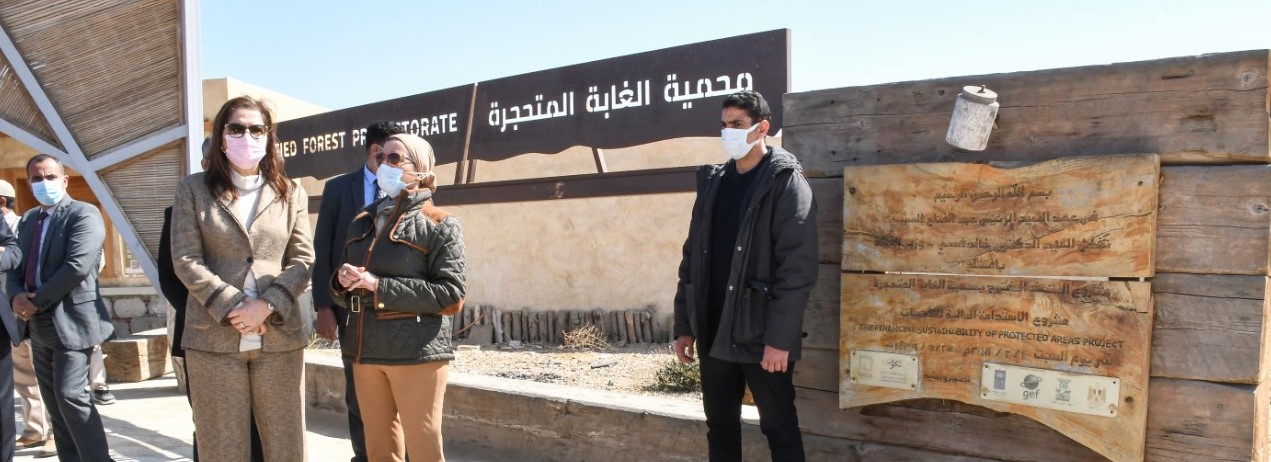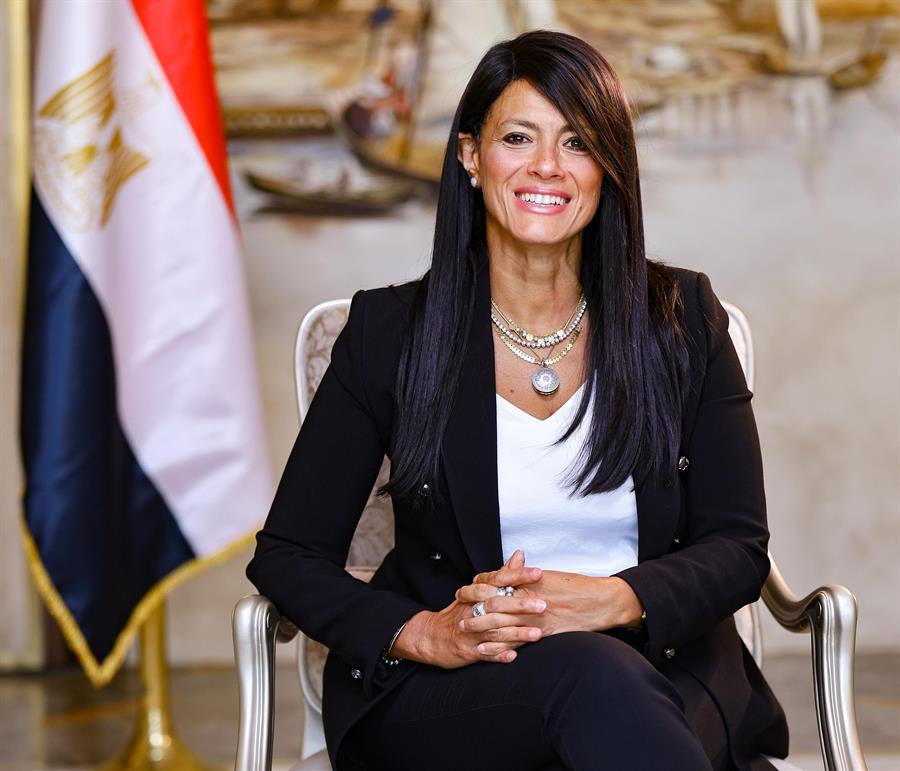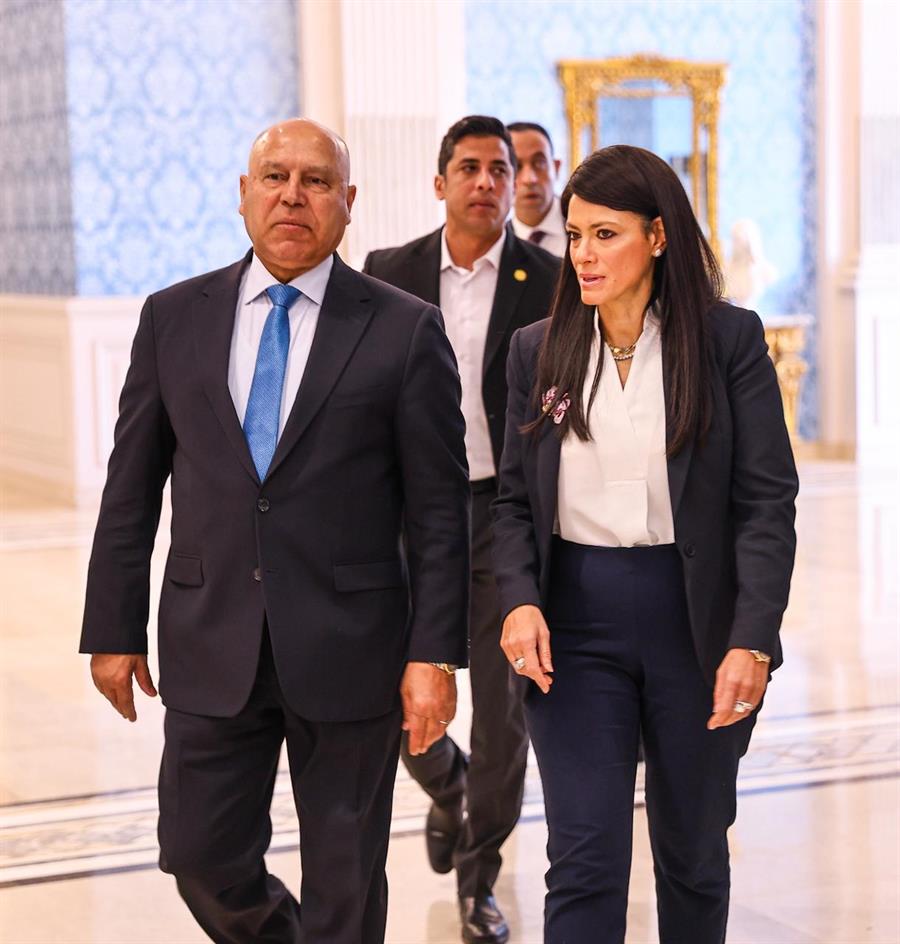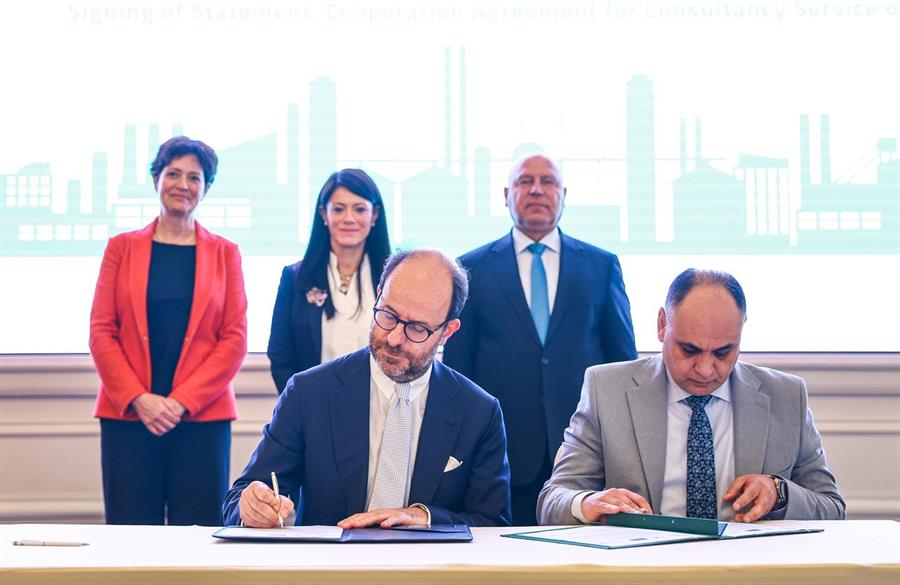Planning, environment ministers discuss investment in Petrified Forest natural reserve

10 March 2021
Dr. Yasmine Fouad, Minister of Environment, and Dr. Hala El-Said, Minister of Planning and Economic Development, made an inspection tour of the Petrified Forest Reserve, accompanied by Mr. Ayman Soliman, Executive Director of The Sovereign Fund of Egypt (TSFE), Dr. Muhammad Sameh, Director General of the Central District Reserves, and some leaders in the two ministries.The visit sought to discuss aspects of cooperation in investment in the Petrified Forest reserve on the ground.Dr. Yasmine Fouad asserted that the visit aims to lay down the necessary procedural steps to assist in the master plan for investment in the Petrified Forest Reserve.This visit came within the framework of the measures taken by the Ministry of Environment in cooperation with the concerned authorities to create a climate for the participation of the private sector in investing in natural reserves.
Fouad indicated that the field of ecotourism is attractive to the private sector and investing in it, and is consistent with the objectives of the sovereign fund and Egypt's vision for sustainable development 2030.Yasmine pointed out that one of the aspects of investment in the Petrified Forest is the establishment of an open museum for the history of fossils in the forest, which tells the history of excavations in it, along the lines of the Wadi El Hitan Museum."The petrified forest is a rare geological relic that has no parallel in the world in terms of its breadth and diversity of petrified wood, through which it gives geologists a great opportunity to study and record the ancient life of the earth." She said.Fouad explained that the ministry has taken many measures intending to unleash the private sector to invest in natural reserves without harming them. Including the completion of the infrastructure development and services provided to visitors, with 12 reserves out of 30 reserves spread across Egypt. “Egyptian nature reserves provide a real experience with the local population of the reserves and enjoy the different forms of their customs and traditions.” She added.Fouad referred to the trip that the "NS Crossing" team made last month, consisting of 30 young men and women, to cross the coastal strip of the Red Sea on bicycles (1,000 km) and visit several reserves, starting with the Wadi Degla reserve, passing through the Wadi el-Gemal reserve to Abla Mountain.These activities aim to prepare the grounds in Egypt so that the Egyptian citizen feels the advantages of natural reserves, preserves them and enjoys them.On her part, Dr. Hala El-Said, Minister of Planning and Economic Development asserted that there are great opportunities to attract investments in the environmental sector as one of the green investments that the Ministry of Planning and Economic Development seeks to increase during the next three years, which is in line with Egypt's Vision 2030.El-Said emphasized that there is an opportunity for cooperation in developing an investment plan for the Petrified Forest through TSFE and setting a vision for the private sector’s participation in these investments in a manner that achieves appropriate investment returns and preserves the environmental value of the reserve.The Petrified Forest Reserve, which is located in the Cairo governorate, is a region densely populated with stems and trunks of fossilized trees within the formation of the Wood Mountain, which belongs to the Oligocene period and consists of layers of sand, gravel, clay, and petrified wood ranging from 70 to 100 meters.









